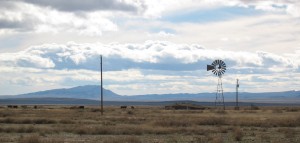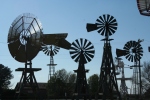Flyover America has moved! Please join us at www.ReadFlyoverAmerica.com
As a total word nerd, I’m always inventing new phrases on road trips.
In the lexicon I’ve developed with my friends, “To Clark” means “to overly plan an adventure in an attempt to make sure everyone will have a great time, only to see the plans backfire, causing disastrous results.”

Clark, disappointed again.
The verb is a direct reference to Clark Griswold, he of National Lampoon’s fame, who (at least on the silver screen) consistently made good-natured attempts to provide a good time for his (otherwise indifferent) family—Ellen, Rusty and Audrey—out on the open road, and consistently came up short.
It is pejorative, but lovingly so, as in “I’m exhausted, Matty really Clarked us into the ground today,” or “Matty, don’t Clark it too hard.”
The phrase was hatched in the summer of 2000, when Bret (now an editor at Newsweek) and Dave (now a political pundit) and I went camping for a week in the San Juan Islands of Washington State.
The three of us never had been camping together, and I wanted to make the experience special. I booked us the best campsite. I planned some fun kayak adventures. I scouted good hikes.
Of course, lots went wrong.
It rained on our campsite. Our kayaks rolled in the Strait of Juan de Fuca. Bret practically needed a Medevac during our hike on Mount Constitution. To add insult to injury, all three of us fell for the same ballerina (and nobody really got her).
Instead of hating me for these unexpected developments, my friends likened me to Griswold, going so far as to call me “Clark” for most of the trip. The rest, as they say, is history.
For me, the lesson was simple: especially while traveling, avoid over-planning at all costs. Build in down time. Poke around. Explore. The key to a good road trip is serendipity, that wonderful phenomenon by which one accidentally discovers something fortunate.
When you Clark it, the itinerary gets so full, the whole notion of happenstance doesn’t stand a chance.
# # #
Of course one always can Clark the home schedule, as well.
I’m guilty of this often, and I’ve done it again this summer. My intentions were good when I agreed to join the gals at Flyover America, but the birth of my first child has made time a rare commodity around these parts.
With this in mind, I’ll be taking an extended hiatus to focus on child-rearing and other stuff. It’s been a pleasure to write with Jenna and Sophia for these few months, and I’ll be back periodically for guest posts or the occasional three-fer. In the meantime, please follow my other work on my personal Web site and daddyhood blog. Thanks for reading.
Read Full Post »














